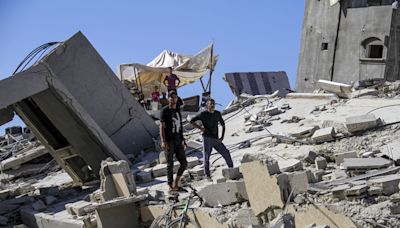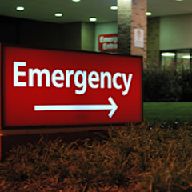Search results
Discover more placesNear Columbus, OH
See the best hospitals in the U.S. and find one near you. See the best cancer hospitals, heart hospitals, pediatric hospitals and more - and see how they rank.
In 2023-2024 U.S. News Best Hospitals ranked hospitals in the U.S. in 15 adult specialties as well as recognized hospitals by state, metro and regional areas for their work in 21 more widely...
Jul 27, 2021 · 2021-22 Best Hospitals Honor Roll. 1. Mayo Clinic, Rochester, Minn. 2. Cleveland Clinic. 3. UCLA Medical Center, Los Angeles. 4. Johns Hopkins Hospital, Baltimore. 5. Massachusetts General...
- Overview
- History of hospitals
hospital, an institution that is built, staffed, and equipped for the diagnosis of disease; for the treatment, both medical and surgical, of the sick and the injured; and for their housing during this process. The modern hospital also often serves as a centre for investigation and for teaching.
To better serve the wide-ranging needs of the community, the modern hospital has often developed outpatient facilities, as well as emergency, psychiatric, and rehabilitation services. In addition, “bedless hospitals” provide strictly ambulatory (outpatient) care and day surgery. Patients arrive at the facility for short appointments. They may also stay for treatment in surgical or medical units for part of a day or for a full day, after which they are discharged for follow-up by a primary care health provider.
Hospitals have long existed in most countries. Developing countries, which contain a large proportion of the world’s population, generally do not have enough hospitals, equipment, and trained staff to handle the volume of persons who need care. Thus, people in these countries do not always receive the benefits of modern medicine, public health measures, or hospital care, and they generally have lower life expectancies.
In developed countries the hospital as an institution is complex, and it is made more so as modern technology increases the range of diagnostic capabilities and expands the possibilities for treatment. As a result of the greater range of services and the more-involved treatments and surgeries available, a more highly trained staff is required. A combination of medical research, engineering, and biotechnology has produced a vast array of new treatments and instrumentation, much of which requires specialized training and facilities for its use. Hospitals thus have become more expensive to operate, and health service managers are increasingly concerned with questions of quality, cost, effectiveness, and efficiency.
Britannica Quiz
Architecture: The Built World
As early as 4000 bce, religions identified certain of their deities with healing. The temples of Saturn, and later of Asclepius in Asia Minor, were recognized as healing centres. Brahmanic hospitals were established in Sri Lanka as early as 431 bce, and King Ashoka established a chain of hospitals in Hindustan about 230 bce. Around 100 bce the Romans established hospitals (valetudinaria) for the treatment of their sick and injured soldiers; their care was important because it was upon the integrity of the legions that the power of ancient Rome was based.
It can be said, however, that the modern concept of a hospital dates from 331 ce when Roman emperor Constantine I (Constantine the Great), having been converted to Christianity, abolished all pagan hospitals and thus created the opportunity for a new start. Until that time disease had isolated the sufferer from the community. The Christian tradition emphasized the close relationship of the sufferer to the members of the community, upon whom rested the obligation for care. Illness thus became a matter for the Christian church.
Special offer for students! Check out our special academic rate and excel this spring semester!
Learn More
About 370 ce St. Basil the Great established a religious foundation in Cappadocia that included a hospital, an isolation unit for those suffering from leprosy, and buildings to house the poor, the elderly, and the sick. Following this example, similar hospitals were later built in the eastern part of the Roman Empire. Another notable foundation was that of St. Benedict of Nursia at Montecassino, founded early in the 6th century, where the care of the sick was placed above and before every other Christian duty. It was from this beginning that one of the first medical schools in Europe ultimately grew at Salerno and was of high repute by the 11th century. This example led to the establishment of similar monastic infirmaries in the western part of the empire.
The Hôtel-Dieu of Lyon was opened in 542 and the Hôtel-Dieu of Paris in 660. In these hospitals more attention was given to the well-being of the patient’s soul than to curing bodily ailments. The manner in which monks cared for their own sick became a model for the laity. The monasteries had an infirmitorium, a place to which their sick were taken for treatment. The monasteries had a pharmacy and frequently a garden with medicinal plants. In addition to caring for sick monks, the monasteries opened their doors to pilgrims and to other travelers.
About The Johns Hopkins Hospital. Patients are the focus of everything we do at The Johns Hopkins Hospital. Our mission to advance patient care, education, and research continues to change the course of modern medicine. Quick Links. Awards and Recognition. Careers. Community Health. Contact Us. Diversity and Inclusion. Giving. History. Leadership.
A hospital is a healthcare institution providing patient treatment with specialized health science and auxiliary healthcare staff and medical equipment. The best-known type of hospital is the general hospital, which typically has an emergency department to
Hospitals matter to people and often mark central points in their lives. They also matter to health systems by being instrumental for care coordination and integration. They often provide a setting for education of doctors, nurses and other health-care professionals and are a critical base for clinical research. Fact sheets.

























